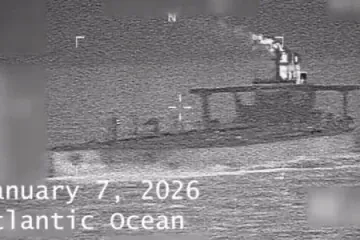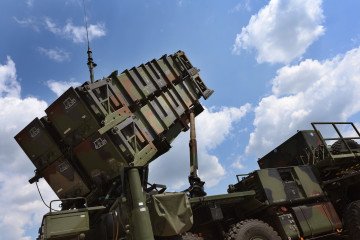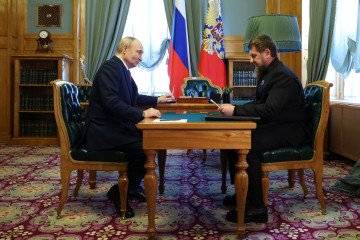- Category
- Latest news
The Economist Unveils Extensive Expansion of Russia’s Defense Industry
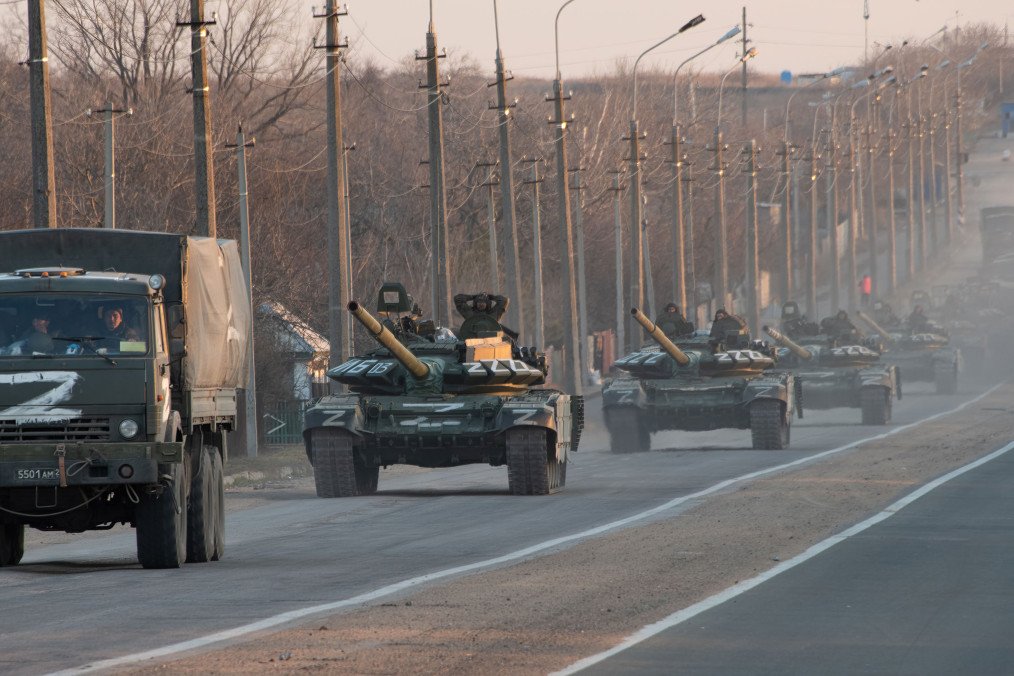
Russian drone attacks on Ukraine are intensifying, reflecting a surge in Russia’s defense industry activity, according to The Economist. The publication’s analysis, based on commercial data, reveals a sharp increase in industrial operations across Russia’s military sector.
This data represents only a fraction of the total number of devices present, possibly between 2% and 10%, but serve as an indicator of the level of Russian industrial activity.
Artilery
Yekaterinburg’s Plant No. 9 manufactures barrels for howitzers and tanks. Satellite images show artillery pieces and cannons parked in the open. A few kilometers away is NPO Novator, which develops Iskander ballistic missiles.
Signs of significant growth are also observed at the Volgograd-based Titan-Barricades Plant, which produces Iskander launchers, and at NPO Splav in Tula, where Grad, Uragan, and Smerch rockets are manufactured.
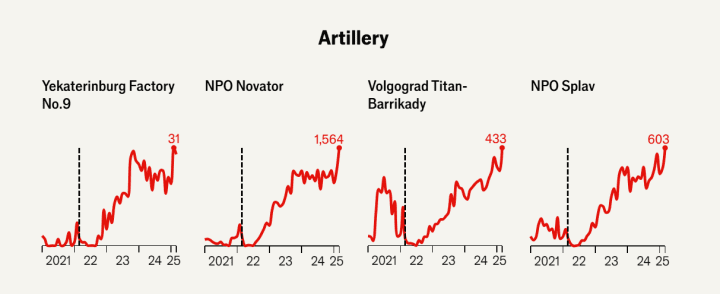
Tank factories
The Omsk Tank Plant, one of Russia’s largest, is refurbishing decades-old T-80 tanks, operating around the clock.
Activity at Omsktransmash saw a slight increase before Russia’s invasion of Ukraine in February 2022, followed by a decline.
However, after the invasion, the number of people at the plant surged. Activity levels have remained particularly high since mid-2023, as the Kremlin recognized the need to prepare for a prolonged war.
During this period, Uralvagonzavod, Russia's largest tank factory, showed significantly higher activity in 2024 compared to 2023. The Arzamas Plant, which produces armored personnel carriers, as well as the Kurganmashzavod and Motovilikha Plants, which produce infantry fighting vehicles, are also experiencing a significant rise.
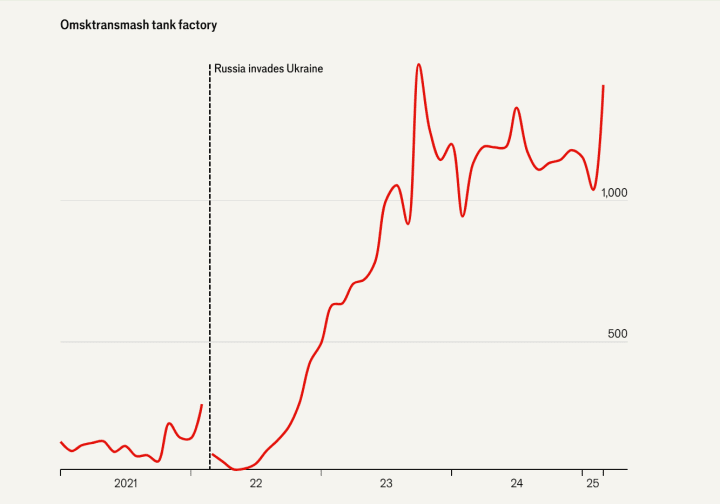
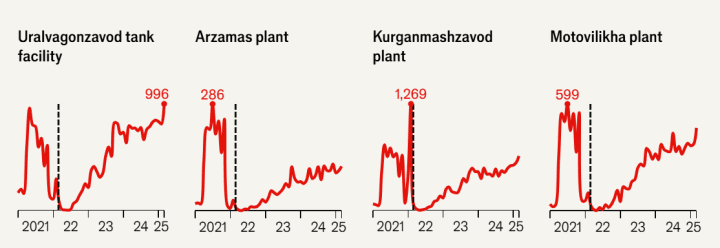
Aircraft
The Shahed-136, an Iranian-designed suicide drone, is increasingly seen over Ukraine. Nearly 140 attacks per day were recorded in February, significantly exceeding levels seen in 2024.
This aligns with increased activity at the Alabuga Plant in Tatarstan, where these drones are produced, as well as at the nearby Begishevo Airport.
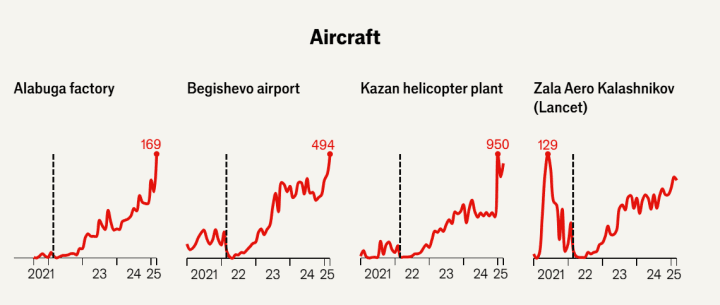
Explosives
Producing three million shells per year requires a massive amount of explosives. The Sverdlov Plant in Dzerzhinsk is Russia’s largest explosives manufacturing facility, producing chemicals for shells and glide bombs.
The number of devices present at this plant has surged in recent months. According to Julian Cooper from the University of Birmingham, activity has also increased at the Selmash Plant in Kirov, which produces shell casings.
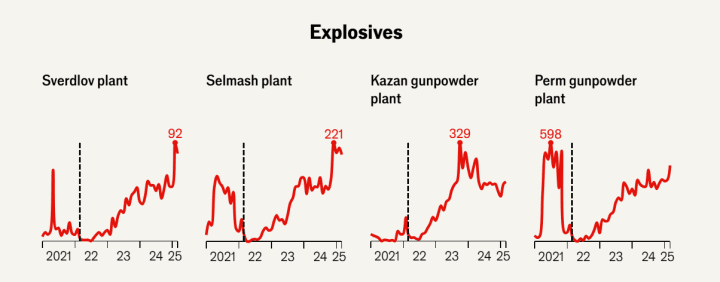
Beyond the visible evidence of Russia's expanding defense industry, a series of subtle yet significant indicators suggest a substantial increase in industrial and military production capacity. According to The Economist, several regions across Russia are experiencing notable changes, pointing to a coordinated strategy of militarization.
In Biysk, an industrial city known for its oleum plant, essential for the production of explosives, and a major military research facility, data reveals a clear escalation in activity, such as daily traffic between residential areas and industrial districts increased by 19% in 2023, indicating heightened workforce mobility. Also, Strava, a fitness tracking application, recorded the emergence of new clusters of individuals running and cycling near these industrial zones, suggesting the arrival of additional workers.
In Luga, where Russia has initiated the formation of a new military division, a similar pattern of industrial and demographic changes has been observed, population density around industrial zones has significantly increased, as shown by mobile phone location data. What is more, night shifts are now standard, with a notable rise in activity between 10:00 p.m. and 6:00 a.m.
These developments are not isolated, The Economist reports. They reflect a deliberate effort by Russia to enhance its defense capabilities, not only by increasing production but also by expanding its workforce and transitioning to continuous, round-the-clock operations. Such patterns point to a broader strategy aimed at sustaining military engagement and reinforcing supply chains in critical sectors.
Earlier, Russian leader Vladimir Putin cautioned that the government and the Central Bank must act “subtly” to avert a potential “collapse” of the Russian economy. Addressing a congress of the Russian Union of Industrialists and Entrepreneurs, which includes members of Russia’s Forbes list, Putin acknowledged that an economic slowdown is inevitable as the economy shifts toward wartime production.

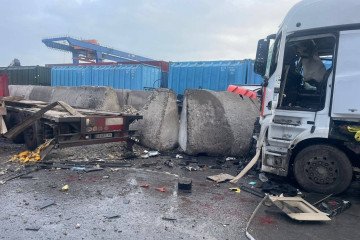
-72b63a4e0c8c475ad81fe3eed3f63729.jpeg)
